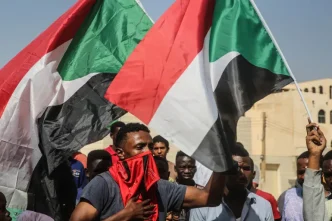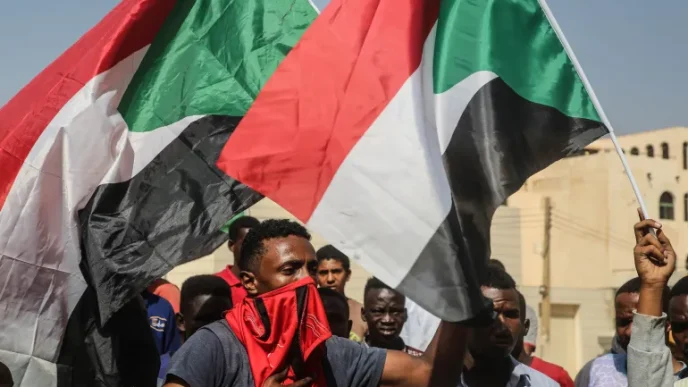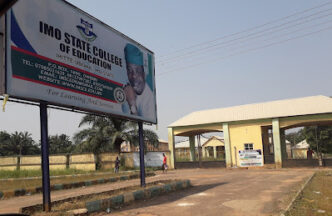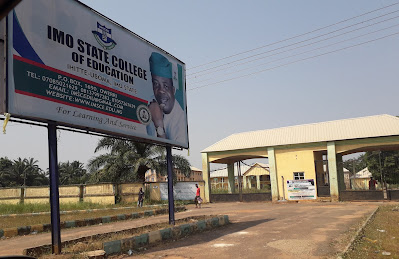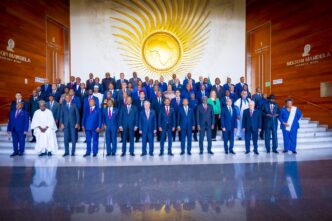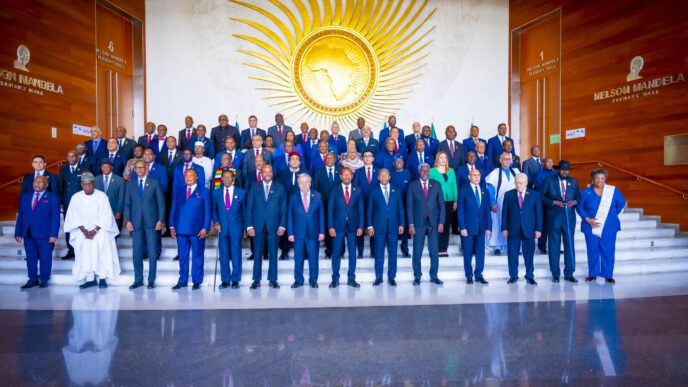BY JAHNEDU IBEKWELU
The Access Bank Lagos City Marathon (ABLCM) recently marked its 10th anniversary, a milestone that should have been a celebration of growth, excellence, and global recognition. Instead, it served as a stark reminder of how much work remains to be done to elevate this event to the standard of other world-class marathons. As someone who has participated in multiple editions of the race, I can attest to its potential. However, after a decade, the marathon continues to grapple with fundamental issues that undermine its credibility and frustrate its participants.
The story of my experience with the ABLCM begins in 2023 when I first decided to run the race. A fellow runner had warned me about the challenges I might face, particularly the lack of water on the course. Her advice—”Put money in your pocket. You’ll need it to buy water”—was both practical and prophetic. In all my years of running, that was the strangest advice I’ve ever received from a fellow runner. It wasn’t the suggestion itself that struck me as odd—hydration is non-negotiable for any serious runner. No, what made it peculiar was the context. It befuddles the mind to imagine buying water on the course of a big city marathon. At the time, I dismissed it as an exaggeration, but by the time I crossed the finish line, I realised how accurate her warning had been.
The 2023 edition of the marathon was a mixed bag. While the race organisers managed to close the roads (for the first 32km, at least) and provide water stations (with no water at them after the 30km mark), the execution left much to be desired. Water points were spaced too far apart—4 kilometres, to be exact—a decision that defies the basic principles of marathon organisation. In a city like Lagos, where humidity often exceeds 75 percent, proper hydration is not a luxury; it is a necessity. Handing runners room-temperature water bottles at such intervals was not only inadequate but also counterproductive. Carrying a 60cl bottle for kilometres added unnecessary weight, making an already gruelling race even more challenging.
Advertisement
The most egregious issue, however, was the practice of ferrying runners who had given up to the finish line and awarding them medals. This practice, which I witnessed firsthand, is unheard of in reputable marathons worldwide. It undermines the integrity of the event and devalues the achievements of those who complete the race. A marathon is a test of endurance, discipline, and determination. Allowing participants to skip the majority of the course and still receive medals is a disservice to the sport and its athletes.
Fast forward to 2024, and the situation had not improved. If anything, it had worsened. The race started an hour earlier than the time stated in the registration email, leaving many runners, including myself, scrambling to catch up. Once again, water stations ran dry after the 34-kilometre mark, forcing runners to rely on local vendors. The most shocking development, however, was the absence of medals at the finish line. Exhausted runners who had just completed 42.2 kilometres in sweltering heat were met with chaos and disappointment. To add insult to injury, street urchins were seen hawking medals at ₦3000 to desperate participants. Exhausted runners, desperate for a memento of their achievement, reluctantly paid up. The organisers claimed they had been “overwhelmed” by the street boys, a feeble excuse given the presence of armed police and soldiers. How these boys gained access to the medals—and the finish line—remains a mystery.
The 2025 edition, billed as the 10th-anniversary race, offered a glimmer of hope but ultimately fell short of expectations. While there were improvements—such as better road closures and more consistent water stations—the organisers still failed to address critical issues. The roads were closed to traffic until 1pm, but buses continued to ferry “runners” to the finish line. To get there, the buses had to clog the roads, pushing the actual runners to broken sidewalks. The medals, though of higher quality than in previous years, were still being sold by unauthorised individuals, only that the prices were probably adjusted for inflation: they were on sale for ₦5000 this year. These recurring problems highlight a lack of accountability and a failure to learn from past mistakes.
Advertisement
ABLCM has potential. It could be a flagship event for Lagos, a city teeming with energy and ambition. But after a decade, it still behaves like a toddler—unsteady, unpredictable, and prone to missteps. The organisers need a complete overhaul, starting with the inclusion of experienced runners in the planning process. After 10 years, the ABLCM should be a source of pride for Lagos and Nigeria. Instead, it remains a work in progress, plagued by the same issues that have marred it from the beginning. The organisers must take responsibility for these shortcomings and implement meaningful changes.
Here are a few suggestions:
1. Hydration: Water stations should be placed at intervals of no more than 2 kilometres, and the water should be cold. This is not an unreasonable demand, especially given the resources available to the organisers, and the very harsh weather in Lagos in February.
2. Road closures: The roads must remain closed for the entire duration of the race. Allowing buses to ferry runners to the finish line is unacceptable and undermines the integrity of the event. It also endangers the actual runners. A runner should not be running off a marathon course from a bus.
Advertisement
3. Medals: Every runner who completes the race should receive a medal. The fact that this basic expectation is still not being met after 10 years is inexcusable. For many, the medal remains the only justification for running a marathon. Only one percent of the world’s population has ever run a marathon. Those who challenged themselves enough to do it should be given a medal.
4. Transparency and accountability: The organisers must be more transparent about their processes and hold themselves accountable for their mistakes. This includes addressing the issue of unauthorised individuals selling medals at the finish line. The finish line of a marathon is a sanctuary that should be accessible only to those who made the sacrifice required to access it. Opening it up to all undermines the event.
5. Technology: Every marathon worth its name has introduced technology in its planning and execution. I sit in the comfort of my home and track friends on marathon courses across the globe. The introduction of an app and the use of timing chips would go a long way in improving the organisation of the race. These tools would not only enhance the experience for participants but also lend legitimacy to the event.
The ABLCM has the potential to be a world-class marathon, but realising that potential will require a concerted effort from all stakeholders. Access Bank, as the primary sponsor, must take a more active role in ensuring that the event meets international standards. The organisers, Nilayo Sports, must prioritise the needs of the runners and address the issues that have plagued the race for years.
Advertisement
The ABLCM at 10 is like a child who, despite reaching a significant developmental milestone, still exhibits the behavioural patterns of a toddler. Parents expect certain milestones as their children grow: walking, talking, feeding themselves, and eventually, demonstrating independence and responsibility. A 10-year-old who cannot perform these basic functions would rightly be a cause for concern. Similarly, a 10-year-old marathon that still struggles with the basics—hydration, road closures, and medal distribution—is a cause for concern.
The marathon’s inability to provide adequate hydration is akin to a 10-year-old who cannot feed themselves. The failure to keep roads closed is like a child who cannot walk steadily. And the absence of medals at the finish line is comparable to a toddler who throws a tantrum instead of communicating their needs. These are not just minor hiccups; they are fundamental failures that call into question the event’s maturity and readiness to be taken seriously on the global stage.
Advertisement
The shortcomings of the ABLCM are not just a matter of inconvenience for runners; they reflect broader issues of governance, accountability, and professionalism in Nigeria. The marathon is a microcosm of the challenges we face as a nation: a lack of attention to detail, a disregard for excellence, and a tendency to prioritize optics over substance.
For instance, the practice of ferrying runners to the finish line and awarding them medals is emblematic of a culture that rewards mediocrity. It sends the message that it is acceptable to cut corners and take shortcuts, as long as the desired outcome is achieved. This mindset is not only detrimental to the marathon but also to the country as a whole.
Advertisement
Similarly, the failure to provide adequate hydration and road closures highlights a lack of planning and foresight. These are not insurmountable challenges; they are basic requirements for any marathon. The fact that they remain unresolved after 10 years suggests a lack of commitment to excellence and a failure to learn from past mistakes.
The ABLCM is more than just a race; it is an opportunity to showcase Lagos and Nigeria to the world. With the right leadership and a commitment to excellence, it could become a source of pride and a symbol of what we are capable of achieving. However, this will require a fundamental shift in mindset and approach.
Advertisement
First, the organisers must prioritise the needs of the runners. This means providing adequate hydration, ensuring road closures, and guaranteeing that every participant receives a medal. It also means addressing the issue of unauthorised individuals selling medals at the finish line.
Second, Access Bank must take a more active role in overseeing the event. As the primary sponsor, the bank has a vested interest in ensuring that the marathon is a success. This means holding the organisers accountable and providing the necessary resources to address the issues that have plagued the race for years.
Finally, the government must recognise the potential of the ABLCM and provide the necessary support to ensure its success. This includes improving infrastructure, enhancing security, and promoting the event on the global stage.
The Access Bank Lagos City Marathon at 10 is a race with immense potential, but it is also a race that continues to fall short of expectations. The issues that have plagued it for years—poor hydration, inadequate road closures, and the absence of medals—are not insurmountable, but they require a concerted effort to address.
It is time for the organisers, sponsors, and government to come together and take the necessary steps to elevate the ABLCM to the standard of other world-class marathons. Until then, it will remain a source of frustration for runners and a missed opportunity for Lagos and Nigeria. For now, the marathon remains a metaphor for unfulfilled promise. It’s a 10-year-old with the maturity of a 3-year-old. And until the organisers acknowledge their shortcomings, it will continue to fall short of the gold label it so proudly claims.
Jahnedu Ibekwelu can be contacted via [email protected]
Views expressed by contributors are strictly personal and not of TheCable.
Add a comment





